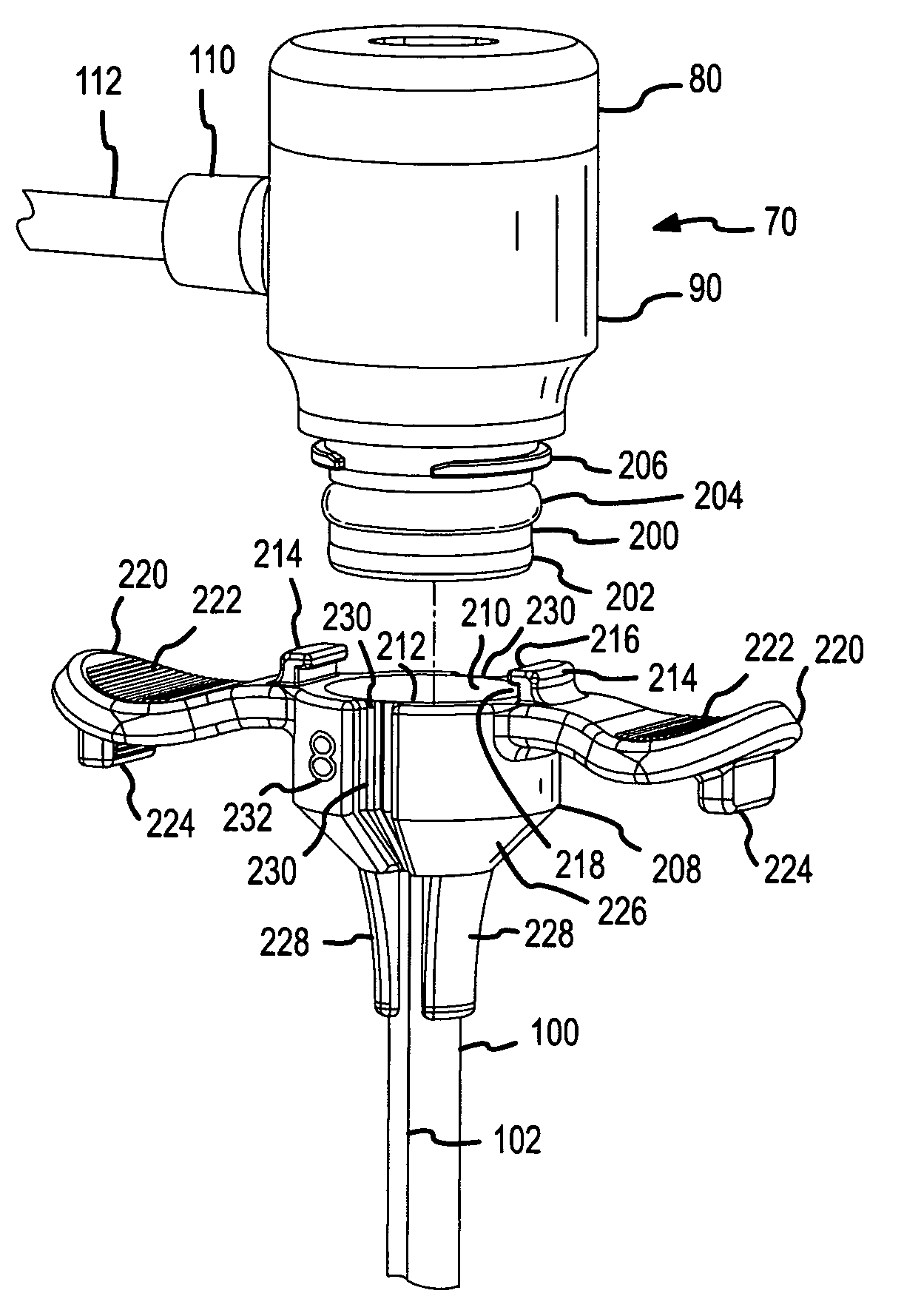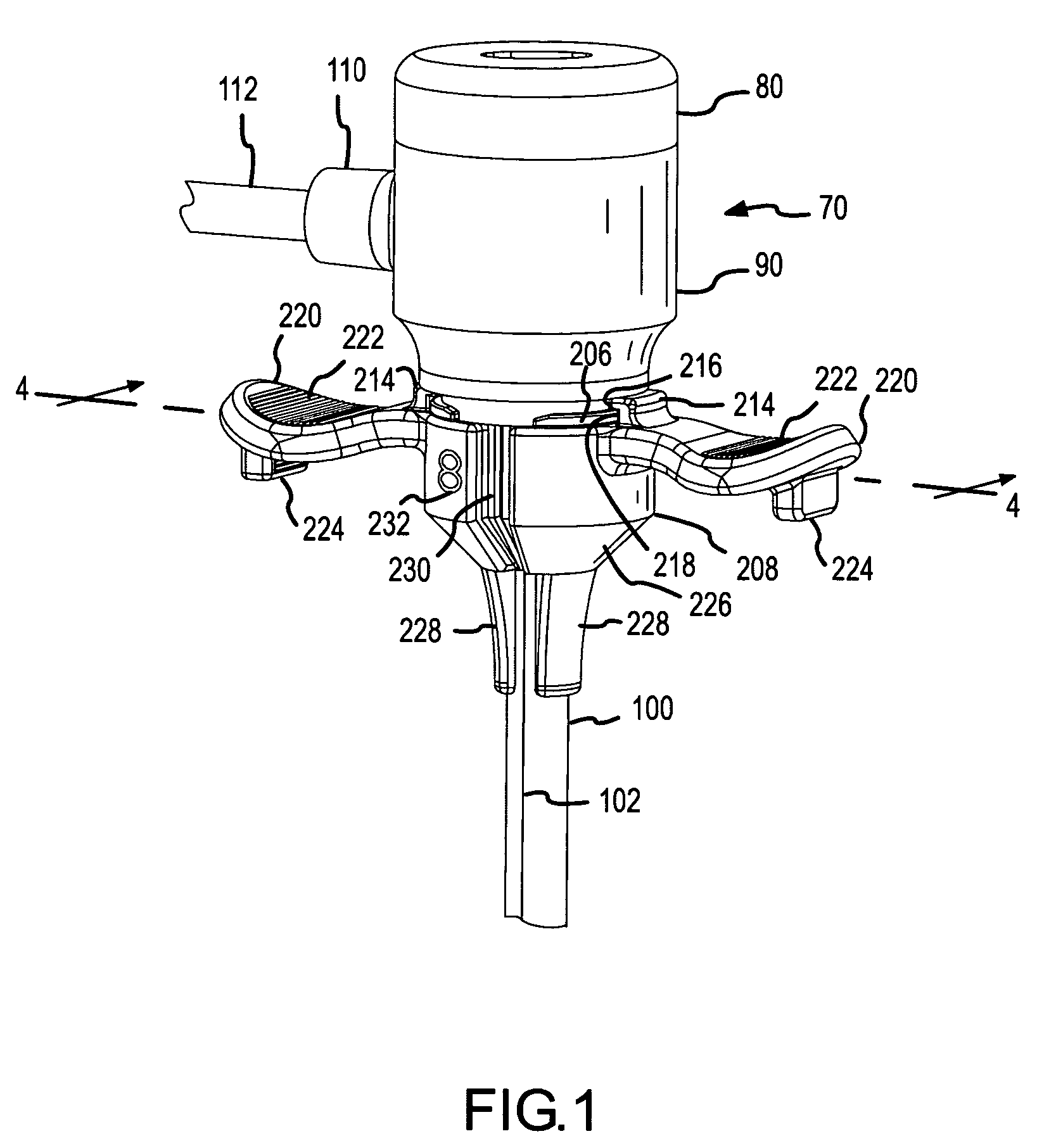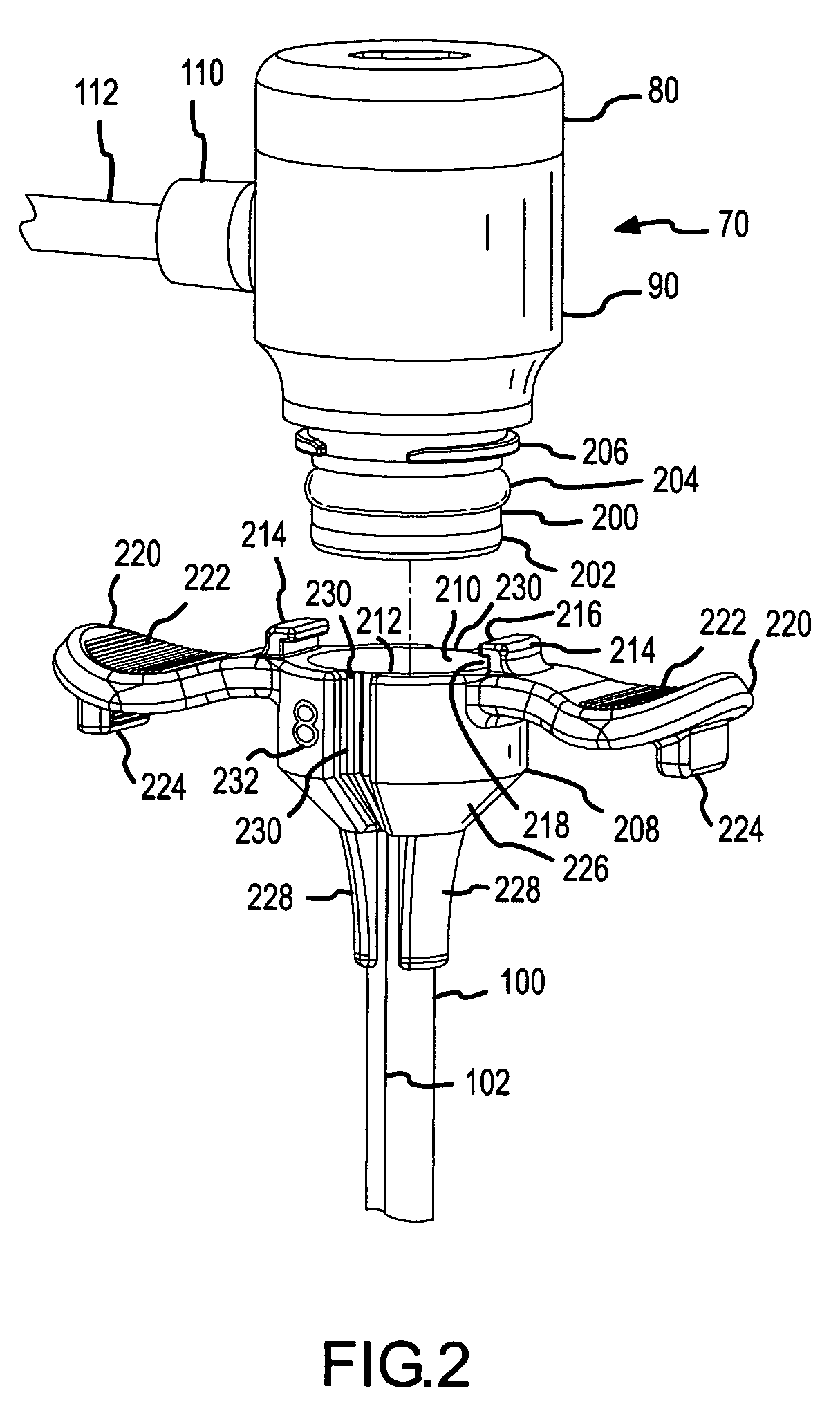Detachable hemostasis valve and splittable sheath assembly
a hemostasis valve and split-type technology, applied in the field of medical instruments, can solve the problems of significant bleeding at the operation site, clotting may occur, and multiple problems, and achieve the effect of a larger diameter
- Summary
- Abstract
- Description
- Claims
- Application Information
AI Technical Summary
Benefits of technology
Problems solved by technology
Method used
Image
Examples
Embodiment Construction
[0062]The following disclosure of the invention describes a hemostasis device and splittable sheath assembly designed for both attachment with and detachment from each other in a manner designed to reduce any force exerted on an indwelling lead. Several embodiments of the invention are disclosed herein. Common among the embodiments of the invention is the ability to disconnect the splittable sheath from the hemostasis device by merely splitting the sheath. No prior removal of the connection between the hemostasis device and the splittable sheath is required. Stated another way, while various structures and methodologies are employed as disclosed herein for attaching the hemostasis device to the splittable sheath, employing the reverse of these methodologies for disconnecting the hemostasis device from the splittable sheath is not required before the sheath is able to be split. The action of splitting the sheath simultaneously uncouples the splittable sheath from the hemostasis devic...
PUM
 Login to View More
Login to View More Abstract
Description
Claims
Application Information
 Login to View More
Login to View More - R&D
- Intellectual Property
- Life Sciences
- Materials
- Tech Scout
- Unparalleled Data Quality
- Higher Quality Content
- 60% Fewer Hallucinations
Browse by: Latest US Patents, China's latest patents, Technical Efficacy Thesaurus, Application Domain, Technology Topic, Popular Technical Reports.
© 2025 PatSnap. All rights reserved.Legal|Privacy policy|Modern Slavery Act Transparency Statement|Sitemap|About US| Contact US: help@patsnap.com



